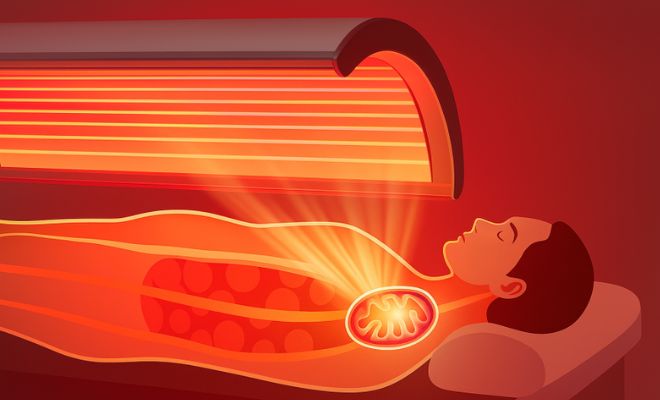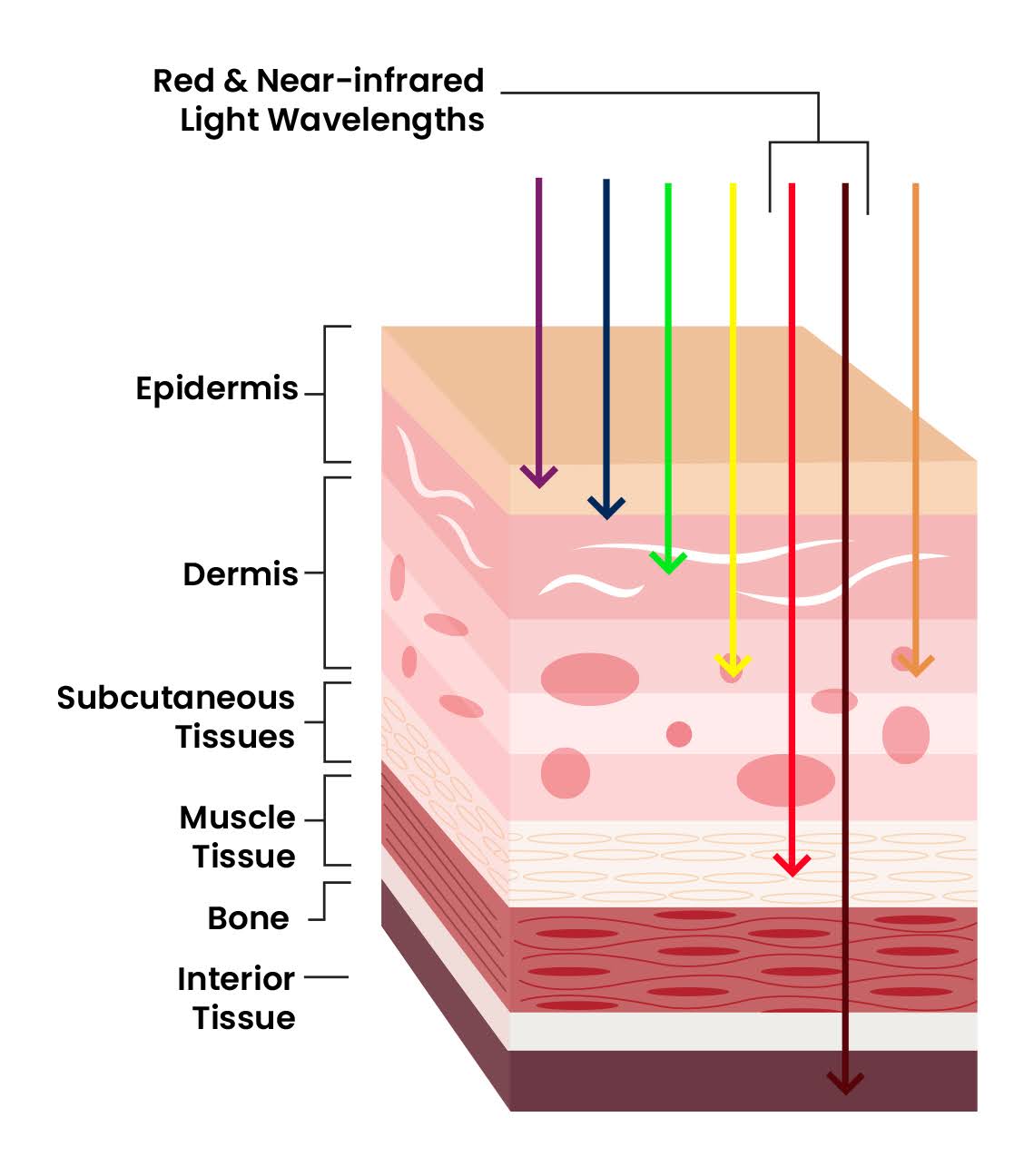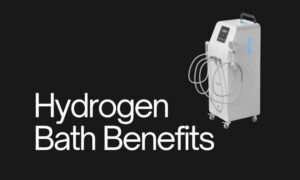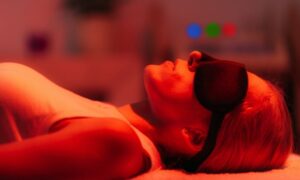Red light is good for your skin! Near-infrared helps with pain relief!
You’ve probably heard about people speaking about light therapy these days. But how do most people really know about the differences among Red Light Therapy (RLT), Near-Infrared (NIR), and the broader category of Photobiomodulation (PBM)? What is actually the best choice for you?
This article dives deep into:
- What PBM really is
- The exact differences between Red and Near-Infrared light
- Which conditions respond better to each type
- How clinics and consumers can practically benefit from HueLight’s advanced PBM systems
Let’s break it down clearly.
What is PBM? Understanding Red and Near-Infrared Light
 Photobiomodulation (PBM) simply means “using light to influence cell function.” It refers to the therapeutic use of specific light wavelengths (600–1100 nm) that stimulate energy production and repair in cells. PBM includes both:
Photobiomodulation (PBM) simply means “using light to influence cell function.” It refers to the therapeutic use of specific light wavelengths (600–1100 nm) that stimulate energy production and repair in cells. PBM includes both:
| Type | Wavelength | Description |
| Red Light Therapy (RLT) | 620–700nm | Visible red light, ideal for surface-level skin therapy |
| Near-Infrared (NIR) | 800–900nm | Invisible infrared light, penetrating deeper tissues and organs inside |
Think of PBM as a broad category, and RLT and NIR as two specialized tools within it. The biggest difference lies in how deeply the light penetrates inside and what biology works on it.
Red vs Near-Infrared: Depth and Benefits
| Feature | Red Light (RLT) | Near-Infrared (NIR) |
| Wavelength | 620–700nm | 800–900nm |
| Visibility | Visible (Red) | Invisible |
| Penetration | Surface-level (~4–5mm) | Deep tissues and organs (several cm) |
| Benefits | Skin rejuvenation, wound healing, collagen | Pain relief, inflammation control, and neurological support |
Red light is ideal for cosmetic and skin-related issues, with better NIR in deep physiological repair, from joint pain relief to cognitive enhancement.
How Does Light Affect Cells?
You might wonder how shining light on your skin could heal tissue or reduce pain. The secret lies in the cellular mitochondria in your body, often called the “energy factories”.
Basically, either RLT or NIR absorbed by an enzyme called mitochondrial cytochrome c oxidase interacts with cellular organs along a cascade of benefits in hierarchy:

Both RLT and NIR wavelengths are absorbed by an enzyme called cytochrome c oxidase in the mitochondria. This interaction triggers a cascade of benefits:
- Increased ATP production: ATP is the cellular energy source. More ATP means faster recovery, better repair, and reduced inflammation.
- Nitric Oxide (NO) activation: Light activates to assist with nitric oxide release from the mitochondria, leading to vasodilation (widening of blood vessels). This enhances blood flow, enabling oxygenation and nutrition to distal tissues, key for pain relief and healing.
- Anti-inflammatory effects: Light therapy can effectively repress excessive immune responses and inflammation, helping reduce pain, swelling, and oxidative stress.
How Deeply Does NIR Reach?
A laboratory study by Tedford et al. (2015) demonstrated that 808 nm near-infrared can penetrate the human skull exoskeleton to reach up to about 40 mm into brain tissues.
Red vs. Near-Infrared for Fibroblast Activation
A 2020 in vitro study published in Lasers in Medical Science (Topaloglu et al.) compared the effects of 655 nm red and 808 nm near-infrared (NIR) wavelengths on human keratinocytes and fibroblasts. Results displayed that 808 nm NIR significantly enhanced fibroblast proliferation, collagen synthesis, and scratch wound healing, compared to red light.
Clinical Observations: Near-Infrared Therapy in Traumatic Brain Injury (TBI)
Naeser and colleagues from VA Boston Healthcare have applied transcranial near-infrared light therapy (PBM) to patients suffering from chronic traumatic brain injury (TBI). These patients underwent repeated NIR therapy sessions over several weeks and reported noticeable improvements in:
- Cognitive function (better attention, concentration, processing speed)
- Memory performance (both short-term and long-term improvements)
- Sleep quality (better overall rest and reduced fatigue)
Naeser et al., 2015 – Journal of Neurotrauma
Which Light Source Is Best for You?
Red Light Therapy (RLT) is ideal for:
- Acne, rosacea, and mild inflammatory skin issues
- Wrinkle reduction and cosmetic rejuvenation
- Superficial wounds and scar management
- Home-care LED face masks and skincare tools
Near-Infrared (NIR) is more suited for:
- Chronic joint or muscle pain
- Sports recovery and muscle fatigue
- Brain fog, poor focus, or sleep difficulties
- Rehabilitation for stroke or traumatic brain injury
Why Choose the HueLight Whole-Body PBM Chamber?
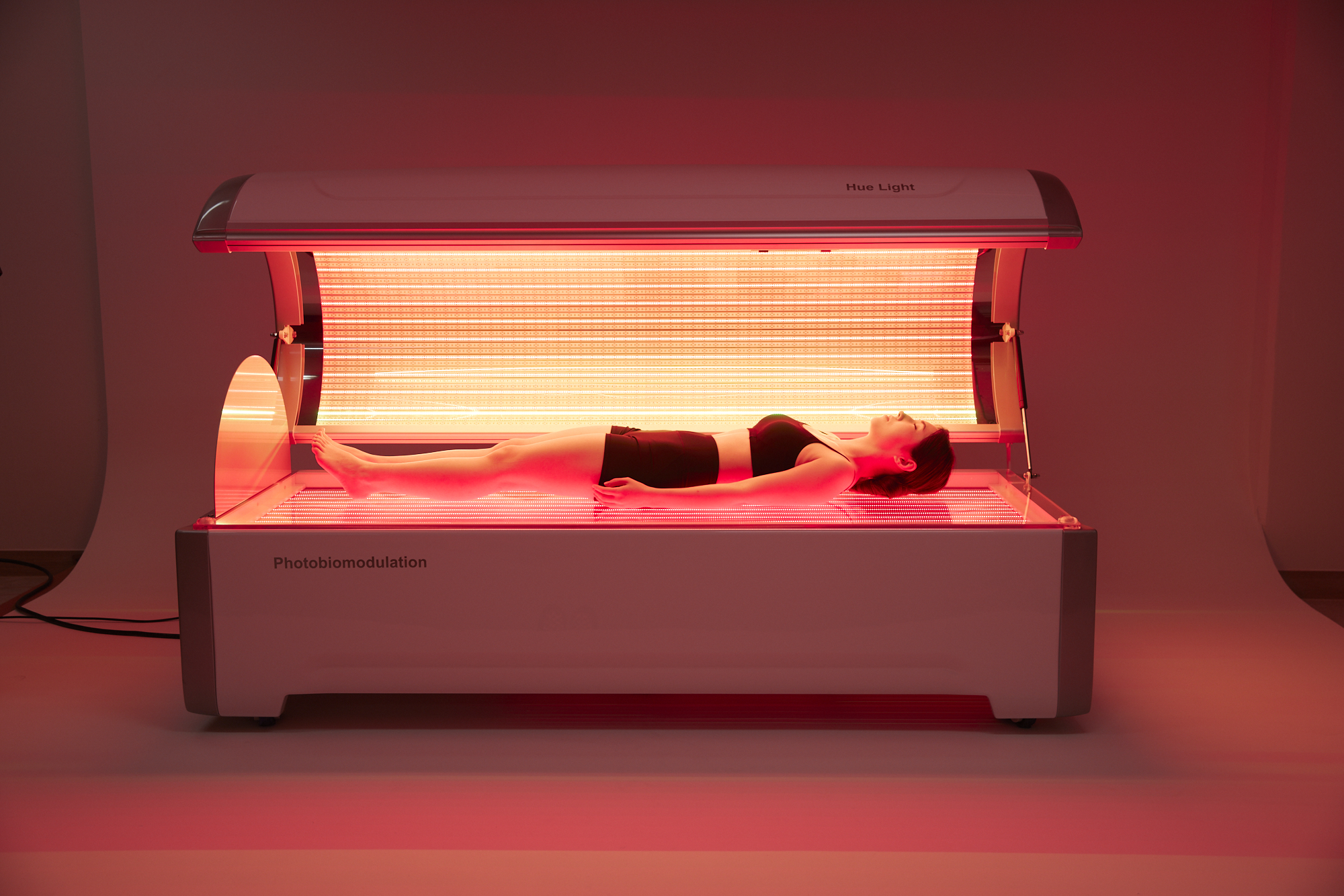
When selecting a professional-grade LED light therapy system, it’s important to choose a device that offers both Red and Near-Infrared (NIR) wavelengths, each targeting different tissue depths and therapeutic goals. A broader spectrum means more flexibility in treatment.
The HueLight Whole-Body Photobiomodulation (PBM) Chamber delivers exactly that, a wide range of clinically relevant wavelengths for comprehensive care:
- 530 nm (Green) – for calming inflammation and promoting skin clarity
- 610–633 nm, 650nm (Red Light) – for surface-level skin rejuvenation, collagen synthesis, and wound healing
- 810nm, 850nm (Near-Infrared) – for deep tissue recovery, neuroregeneration, and pain relief
- 940nm (Infrared) – for enhanced circulation and metabolic support
The system also features pulsed light modes, which may optimize tissue penetration and stimulate specific cellular responses depending on treatment goals.
With this full-spectrum platform, the HueLight chamber enables clinics, wellness centers, and recovery facilities to address a wide variety of patient needs, from cosmetic skin repair to chronic pain management and cognitive enhancement.
If you’re looking for a single device that can do it all, HueLight’s integrated light system offers unmatched flexibility and therapeutic range.
Conclusion: Red, NIR… or Full-Spectrum?
Red Light Therapy (RLT), a powerful tool for improving skin health, very effectively heals wrinkles and wounds on the skin. Near-infrared (NIR), on the other hand, reaches deeper into tissues, making it more ideal for chronic pain, inflammation, and even cognitive issues.
But what if your needs are more complex?
If you’re a clinic, wellness center, or health-conscious individual looking for a device that can handle both aesthetic and therapeutic goals, a full-spectrum PBM system like HueLight’s Whole-Body Chamber will be your best option.
With wavelengths ranging from green (530nm) to infrared (940nm)—and programmable pulsed modes—you’re not confused between red or NIR. You’re choosing a complete therapeutic ecosystem designed for either beauty or healing.
